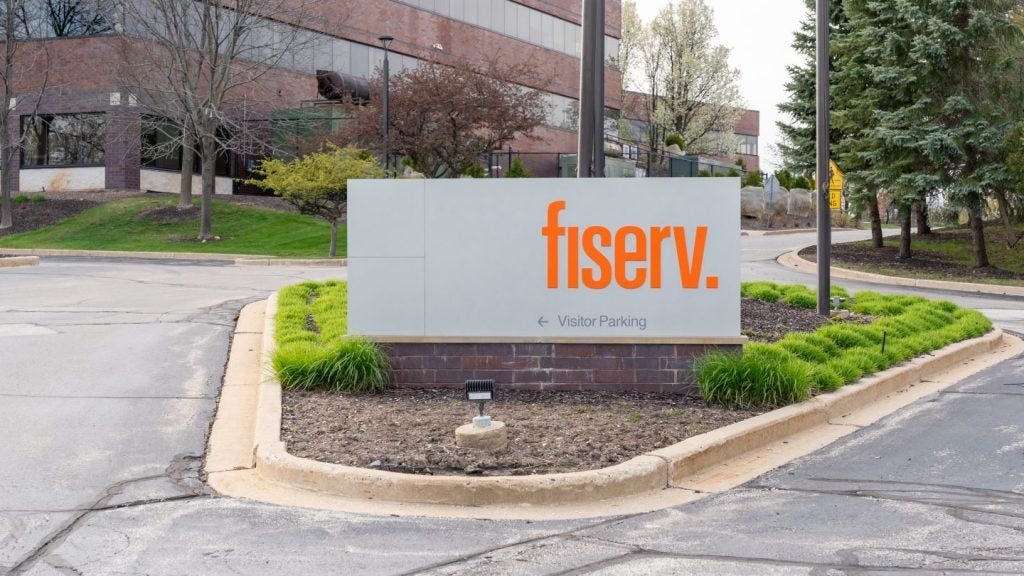mobile banking and payments market has been ratcheted-up
considerably by Fiserv’s launch of a solution aimed at supporting
multiple protocols. Fiserv’s Calvin Grimes discussed the payment
technology heavyweight’s mobile market strategy with Charles
Davis.
has meant more promise than practical application to date, but a
new solution from financial technology vendor Fiserv and New
Zealand-based Mobile Commerce Limited (M-Com) aims to support short
message service (SMS), wireless application protocol (WAP), and any
other operating system that pops up along the way.
single solution that supports SMS, WAP and downloaded mobile
applications, is designed to make mobile banking enrolment as easy
as cashing a cheque or using an ATM, and perhaps even easier.
enrollment, and integrates with core banking, online banking and
electronic payments systems, Calvin Grimes, product manager for the
mobile product suite, tells EPI.
Single source
Grimes says ease of use has been a major obstacle for mobile
banking.
institutions are having to go out and build a series of complex
relationships with multiple vendors, and so we set out to build a
single application that would eliminate the complexity and offer a
single source for all of the institution’s mobile banking needs,”
explains Grimes.
because the New Zealand company is out in front in terms of use of
mobile banking, especially the use of near field communication for
contactless payment applications.
applications for quite some time now,” says Grimes. “The mobile
banking customer of today will become the mobile commerce customer
of the near future, and this platform positions a financial
institution to take advantage of this as it evolves.”
reach more consumers through its native support for SMS, WAP, and
downloaded mobile applications. In addition, the solution is unique
because it allows financial institutions and billing organisations
to drive enrolment of offline customers to a more profitable mobile
banking relationship. Consumers can enrol via a mobile device, at a
branch, ATM or customer contact centre, as well as through the
online channel. Fiserv will also support certain marketing
campaigns and research aimed at driving adoption and usage within
this emerging channel.
solution can integrate seamlessly with a variety of core banking
systems, online banking systems and electronic payments systems. It
is designed to leverage a financial institution’s or biller’s
existing online security infrastructure, including existing
credential management capabilities. In addition, Mobile Money
offers consolidated customer care and reporting across both the
online and mobile channels, potentially lowering the total cost of
ownership and enabling a broader view of the customer’s needs when
they contact the financial institution for service or
support.
that consumers will eventually want to access their accounts
through a variety of mobile platforms, often in the same day,”
Grimes says. “With Mobile Money, a customer could send a text
message request for their balance in the morning, then use their
phone to move money later.”
flexibility to deploy the Fiserv mobile banking and payments
solution as a hosted solution or as software that can be managed
and run in-house. The solution is available now as an in-house
solution for the top 200 financial institutions. A hosted version
is expected by mid-2009.
features in Mobile Money is the ability to both demonstrate the
service personally and enroll customers instantly. The system’s
administrative tools let customers enrol in mobile banking not only
through the bank’s website, but also at branches and call centres
and by phone, he said.
customers who today are not doing any sort of remote banking at
all,” says Grimes. “Our research tells us there are many customers
who do not bank online but carry a mobile phone, and that is
precisely who we think would love an easy-to-use solution that we
can demonstrate for them on their own phone.”
currently uses the M-Com solution, saving up to $30 per customer
when it drives these customers from an offline relationship with
the bank to a mobile banking relationship. The bank achieves this
result even though more than 40 percent of its customers are not
online banking users.
The demand is there
Fiserv already has relationships with telecommunication service
providers AT&T and Verizon for its billing services, and is
looking to expanding into other areas of mobile banking and
e-payments as the handsets and networks become more comparable with
the online experience. Grimes says today’s only problem is moving
from e-payments for established online channels to e-payments that
can be set up on the fly for any payment needed.

US Tariffs are shifting - will you react or anticipate?
Don’t let policy changes catch you off guard. Stay proactive with real-time data and expert analysis.
By GlobalDataapplication so easy to use it states its own case.
so we can build out to mobile commerce, and they full expect that,”
Grimes adds. “Consumers are starting to really pick up on this
stuff and they really want it, and if their payment device is ready
and waiting, then it will really take off.”
research director in the emerging technologies practice at
consultancy TowerGroup, described the new Fiserv offering as a
“headline event” in the development of mobile banking.
of other core banking and mobile banking/payments players given
that this new offering is now the core banking market’s only single
platform triple-play solution that combines banking and payments
functionality,” wrote Garcia.
the still nascent, yet vibrant, mobile finance market by
leapfrogging direct competitors with a model that enables a
trifecta of virtual services: best-of-breed mobile finance,
internet banking, and bill pay.”






